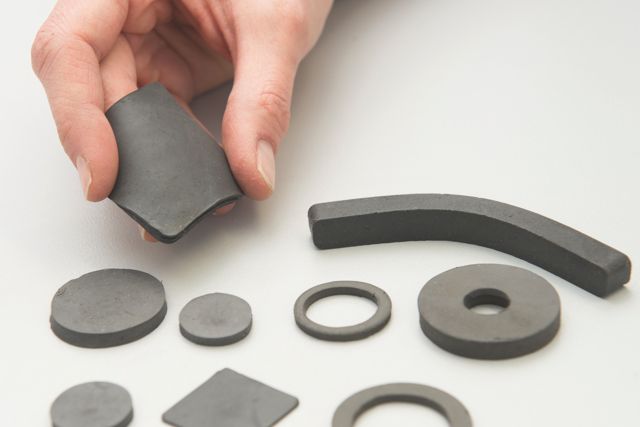Magnetorheological elastomers (MRE) are rubber-like composites consisting of an elastomer matrix and magnetizable particles. When applying a magnetic field, there are two essential technically usable effects:
- A reversible change in the viscoelastic properties associated with the magnetic field strength (e. g. increase in storage modulus G' and loss modulus G''), i. e. the elastomer becomes stiffer with increasing field strength.
- A reversible actuation also increasing with the magnetic field strength, i. e. the MRE body deforms in the magnetic field like an artificial muscle.
This results in far-reaching usage potentials for adaptive damping and actuators. In addition, the magnetizable particles in the elastomer matrix increase the magnetic permeability compared to the corresponding value of the pure elastomer material. The result is an elastic material with significantly increased magnetic conductivity that can be used as a flexible magnetic field conductor, for example.
The MRE matrix can consist of different elastomer materials. Examples are silicone and natural rubber. The strength of the aforementioned effects increases with decreasing elastomer hardness, i. e. the change in viscoelastic properties and actuation are particularly pronounced in soft MRE materials. Iron particles with their high saturation magnetization are predominantly used as magnetizable particles in the MRE.
At the Center Smart Materials and Adaptive Systems, magnetorheological elastomers can be produced from various material components and in various forms. Different manufacturing processes are available for this purpose.
